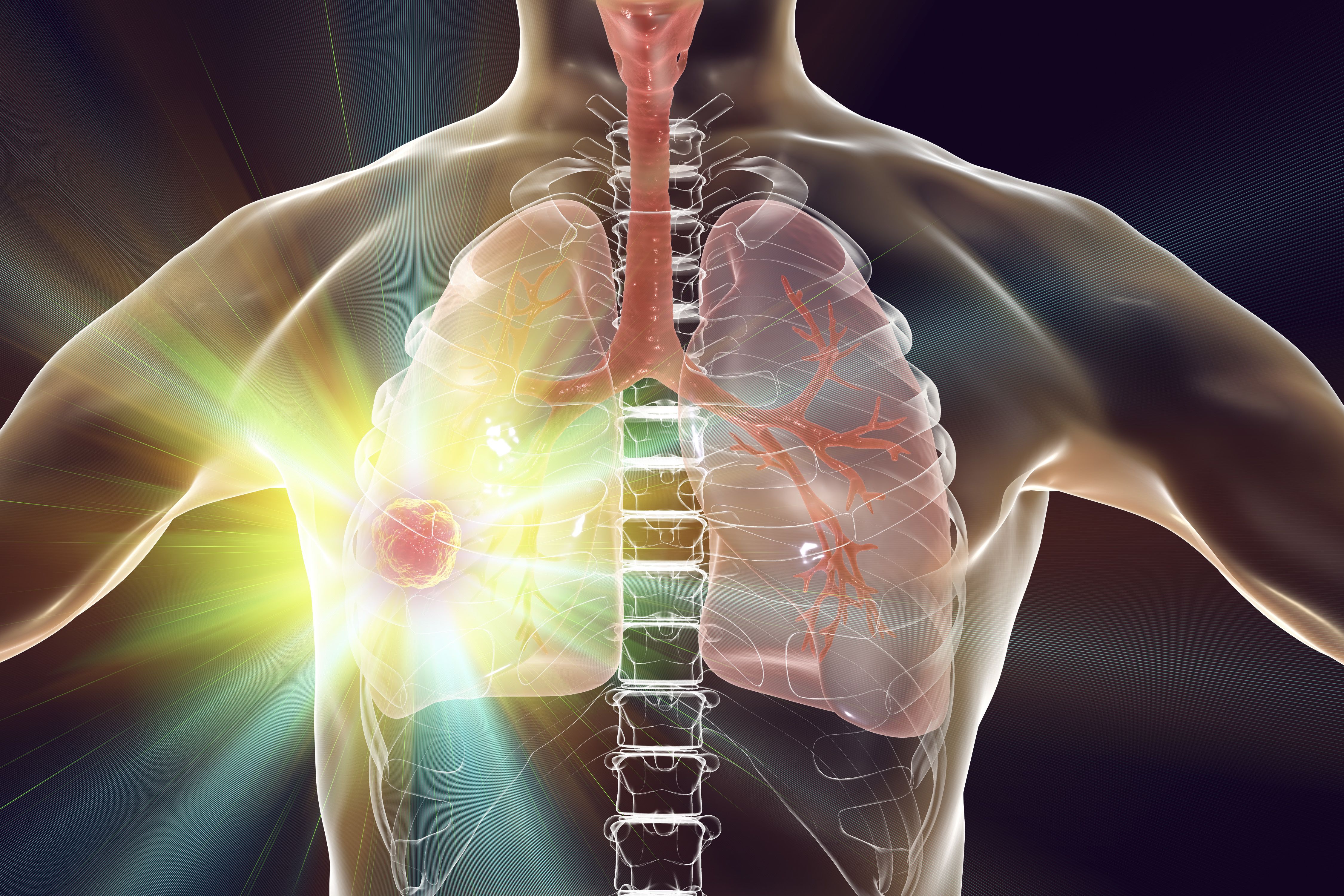Novel Combo Shows Early Activity in PD-L1–Resistant NSCLC, Melanoma
Glycan editing of cell surface glycans with E-602 may represent a novel therapeutic approach among patients with cancer.
"E-602, a first-in-class engineered human sialidase Fc fusion, has demonstrated safety, proof-of-mechanism, and early anti-tumor activity in combination with cemiplimab for patients with PD-1– and PD-L1–resistant solid tumors,” according to study author Manish R. Sharma, MD.

Combining the first-in-class engineered human sialidase Fc fusion E-602 with cemiplimab (Libtayo) elicited early anti-tumor activity, proof-of-mechanism, and tolerability among patients with PD-L1–resistant solid tumors such as non–small cell lung cancer (NSCLC) and melanoma, according to findings from the phase 1/2 GLIMMER-01 trial (NCT05259696) presented at the 2024 Society for Immunotherapy of Cancer Annual Meeting (SITC).
Data showed that the E-602 combination produced tumor desialylation for 2 to 5 days following treatment despite rapidly clearing with a half-life of approximately 1 day. When excluding those with a baseline HYRDA histoscore of 20 or lower, tumor desialylation occurred in 9 of 10 patients.
CD163-positive tumor-related macrophages also decreased following therapy with E-602 plus cemiplimab. Excluding those with a baseline HYDRA histoscore of 20 or lower, 8 of 10 patients experienced decreases in tumor-related macrophages in tumors.
Among 15 patients with hypersialylation—those with a HYDRA histoscore of 20 or higher—partial responses (PRs) occurred in 7% (n = 1), stable disease occurred in 40% (n = 6), and progressive disease was reported in 53% (n = 8). The 1 patient who experienced a PR has remained on study treatment for more than 12 months at the time of analysis presentation. Among 5 of those who lacked hypersialylation and had HYDRA histoscores of lower than 20, all patients (100%; n = 5) had progressive disease following study therapy. The data indicate that desialylation of tumor cells exhibiting hypersialylation may be a potential therapeutic strategy among this patient population.
“Glycan editing of cell surface glycans offers a potential novel therapeutic approach to treat cancer. E-602, a first-in-class engineered human sialidase Fc fusion, has demonstrated safety, proof-of-mechanism, and early anti-tumor activity in combination with cemiplimab for patients with PD-1– and PD-L1–resistant solid tumors,” Manish R. Sharma, MD, co-director of Clinical Research at the START Center for Cancer Research – Midwest, stated in a presentation on these findings.
“A future goal of this program is to increase tumor desialylation duration to improve anti-tumor activity. There are 2 ways to potentially do that. One is to increase drug exposure by optimizing the human sialidase for an extended half-life. The other is to enhance tumor targeting by incorporating a tumor-targeting arm,” Sharma added.
According to Sharma, tumor cell sialoglycans can suppress innate and adaptive anti-tumor immunity, and desialylation of tumor cells may enhance these types of anti-tumor immunity.
In the monotherapy dose-escalation portion of the GLIMMER-01 trial, patients received E-602 at escalating doses of 1 mg/kg, 3 mg/kg, 10 mg/kg, 20 mg/kg, and 30 mg/kg. Investigators determined the recommended phase 2 dose as 20 mg/kg.
In part 2 of the GLIMMER-01 trial, patients received E-602 at 20 mg/kg once weekly plus cemiplimab at 350 mg every 3 weeks. The primary end points were safety and tolerability as well as objective response rate.
The cohort included 21 patients with PD-L1–resistant disease, with the most common tumor types including NSCLC (n = 12), melanoma (n = 8), and esophagogastric junction cancer (n = 1). The median age was 66 years (range, 42-82), and most patients were female (52%) and had an ECOG performance status of 1 at screening (67%). Most patients had baseline tumor hypersialylation (75%).
Combining E-602 with cemiplimab was shown to increase the level of peripheral cytokines compared with E-602 alone.
The treatment combination produced no dose-limiting toxicities, and investigators observed 1 treatment-related serious adverse effect (AE) consisting of a grade 3 infusion-related reaction. Grade 2 toxicity included infusion-related reactions (38%) and fatigue (10%). Additionally, grade 1 treatment-related AEs included nausea (10%), chills (10%), and fatigue (5%).
Reference
Sharma MR, Johnson M, Puzanov I, et al. GLIMMER-01: phase 1/2 trial of a first-in-class bi-sialidase (E-602) in combination with cemiplimab in patients with PD-(L)1-resistant solid tumors. Presented at the 2024 Society for Immunotherapy of Cancer Annual Meeting (SITC); November 6-10, 2024; Houston, TX. Abstract 758.